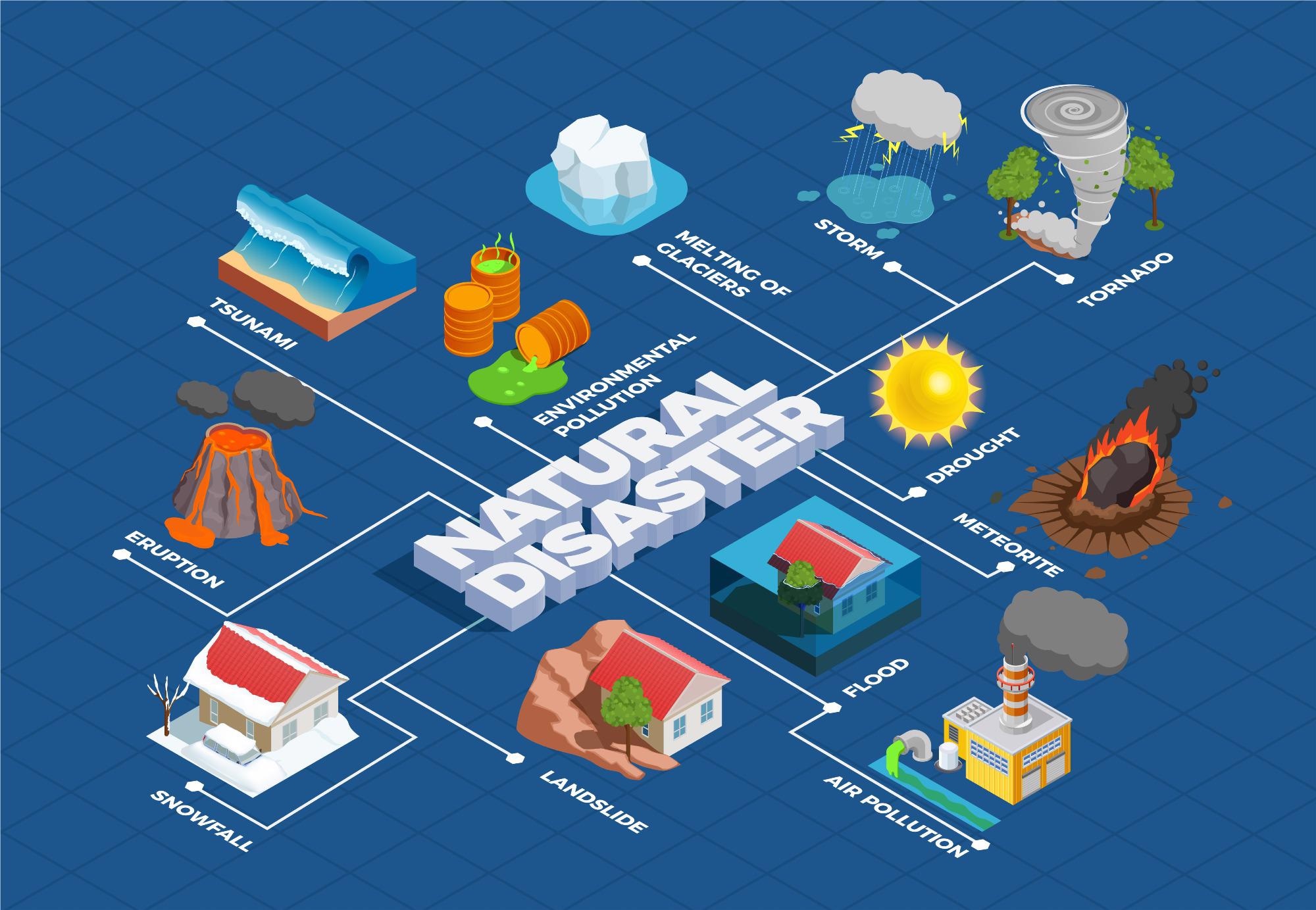Natural disasters have been increasing across the globe in recent years with more wildfires, typhoons, and extreme temperatures than before. These natural disasters are driven by climate change, causing loss of homes, habitat, and lives. Economic difficulties are predicted to follow. Understanding the weather phenomenon behind these natural disasters and improving weather forecasting could better predict when these events might occur, providing an earlier warning to prepare and mitigate the repercussions of anthropogenic actions.

Image Credit: Macrovector/Shutterstock.com
AETHER aims to do just that; the industry-academia project aims to “reduce unreasonable damage from disasters by using data from space”. It is the first Japanese project to gather observation data for weather forecasting with a commercial weather satellite. The project will develop an original small sensor for Earth Observation (EO), which will be fixed to a commercial weather satellite and gather atmospheric data from space to improve weather forecasts' precision.
The collaboration is spearheaded by ALE Co, a Japanese startup founded in 2011 to create the world's first shooting star. The company has signed a memorandum of understanding and joint research agreements for the development of weather satellites with Nippon Telegraph and Telephone Corporation (NTT), NTT Device Technology Laboratories, scientific research institute RIKEN Center for Computational Science, and the National Astronomical Observatory of Japan (NAOJ).
Predicting Weather Patterns
Accurate weather forecasting is becoming increasingly important due to the growing number of natural disasters. Forecasting is based on a wide variety of stable observations across a number of locations at different times and is usually performed using large government-controlled satellites.
A series of steps are typically involved; observational data shows the present situation, while weather models simulate the future, and data assimilation combines the observational data and weather models to help improve the accuracy of weather forecasts.
With the increasing number of natural disasters, it's necessary to improve how weather events such as heavy rains and typhoons are tracked. Current efforts involve gathering atmospheric data from several hours to days ahead of their happening, which is especially important in Asia. Countries within this region, particularly Japan, have an increased susceptibility to natural disasters due to geographic factors.
What is the AETHER Project?
AETHER takes its name from the Greek god and represents the glow of the sky that never disappears. The project will unite various organizations that will use their expertise to provide weather information suitable for the current global environment to Japan.
It will use a CubeSat, a miniature satellite made up of multiple cubic modules used for space research, to drastically reduce the cost of weather forecasting satellites.
A "microwave sounder" will also be developed; this passive sensor receives radio waves in the microwave region of the spectrum, including (sub-)millimeter-wave. The detected microwave signal contains information about the atmosphere, such as water vapor and temperature, which are also essential factors for weather forecasting.
With this additional information, ALE Co aims to contribute to disaster prevention and mitigation as part of the commercial sector, complementing the government's large satellites by creating a 'satellite constellation' - an "assembly of multiple satellites and their operation technologies".
"For us at ALE, who have been aiming to connect science and society with the mission to make space closer for people since our establishment, it is a very emotional moment to tell you about the launch of this project," says Lena Okajima, CEO, ALE Co.
We are delighted to be able to work with such a great group of people on this AETHER project, which will help to solve social issues through scientific knowledge, with the aim of elucidating climate change and extreme weather events and using weather forecasting to prevent disasters.
Lena Okajima, CEO, ALE Co.
The first step involves creating elemental technologies; NTT and NAOJ will focus on the research and development of the central components of the microwave sounder using sub-millimeter wave-band device technology and the receiver technologies used for observation instruments in radio astronomy.
RIKEN will develop software for data assimilation and weather forecasting using its climatological knowledge of large computer systems like "Fugaku", an exascale supercomputer which claims to be the fastest in the world.
Japanese Fugaku Supercomputer Is Now World's Fastest, Twice Faster Than IBM Summit
Video Credit: Indiatimes/YouTube.com
Once the technology has been developed, a ground demonstration using a prototype will follow, with the goal of a space demonstration within five years.
Continue reading: EnMAP to Monitor Climate Change with Hyperspectral Sensor
References and Further Reading
Satnews (2021) AETHER, The First Japanese Commercial Weather Satellite Demo, Initiated By ALE [online] Available at: https://news.satnews.com/2021/09/26/aether-the-first-japanese-commercial-weather-satellite-demo-initiated-by-ale/
ALE Co. (2021) Space startup company ALE launches Industry-Academia collaboration project AETHER with NTT, RIKEN and NAOJ - The first Japanese project for a commercial weather satellite demonstration [online] Available at: https://star-ale.com/en/news/2021/09/27/000179.html
Disclaimer: The views expressed here are those of the author expressed in their private capacity and do not necessarily represent the views of AZoM.com Limited T/A AZoNetwork the owner and operator of this website. This disclaimer forms part of the Terms and conditions of use of this website.